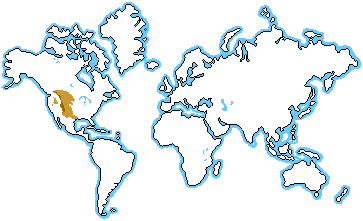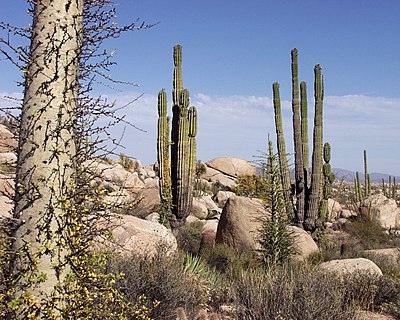- Tundra
- Desert
- Chaparral
- Grasslands - Prairie
- Grasslands - Savanna
Monday, March 31, 2008
Grading for Wikispaces
Friday, March 28, 2008
Wikispaces and Grades
- Table 2 = Tundra
- Table 3 = Desert
- Table 4 = Chaparral
- Table 5 = Grasslands - Prairie
- Table 6 = Grasslands - Savanna
Thursday, March 27, 2008
Wikispaces and Grading
- Table 2 = Desert
- Table 3 = Chaparral
- Table 4 = Grasslands - Prairie
- Table 5 = Grasslands - Savanna
- Table 6 = Tundra
Tuesday, March 25, 2008
Wikispaces
- Table 2 = Chaparral
- Table 3 = Grasslands - Prairie
- Table 4 = Grasslands - Savanna
- Table 5 = Tundra
- Table 6 = Desert
Each person needs to pick a category and post comments under that category. Each posting needs to have at least 5 good sentences and a picture or video.
* Animals
* Geography
* Vegetation
* Climate
http://room42.wikispaces.com/
We will be viewing the tour videos for wikispaces.
http://www.wikispaces.com/site/tour#introduction
Wikispaces
- Table 2 = Grasslands - Prairie
- Table 3 = Grasslands - Savanna
- Table 4 = Tundra
- Table 5 = Desert
- Table 6 = Chaparral
- Animals
- Geography
- Vegetation
- Climate
Monday, March 24, 2008
Sunday, March 23, 2008
Monday, March 17, 2008
Spring Break
Wednesday, March 12, 2008
Tuesday, March 11, 2008
Prairie - Grasslands

The grasslands are divided into two categories, called savanna and prairie depending on their locations, either north or south of the equator. The savanna and prairie have very different vegetation, animals, and climate. Today we will be talking about the prairie grasslands that are located north of the equator. Describe the geography, climate, vegetation, and animals of the prairie.

Virtual Field Trip:
Lewis and Clark Then and Now: Plants and the Expedition II--The Grasslands Prairie
Contents of the Broadcast:
- Opening to 3:46—Introduction, welcome, orientation to today's topic, and introduction of our guest Malinda Slagle, Restoration Ecologist with the Missouri Botanical Garden’s Prairie Restoration Project.
- 3:46 to 12:50—The first topic explored answers the question “What is a prairie?” Subjects include types and locations of grasslands around the world, differences between tall, medium, and short grass prairies, and rainfall impacts on the prairie. Images include slides of grassland locations and video of tall, medium, and short grass prairie. Student questions and comments on these topics are weaved throughout the segment.
- 12:50 to 19:42—Next, we investigate the prairie more by looking at plants of the prairie. Images of numerous plants are provided including big blue stem, blue grama grass, Indian grass, fleabane daisies, goldenrod, white indigo, lead plant, and sunflower. Student questions and comments are included.
- 19:42 to 23:42—In our next segment we look at animals of the prairie both now and during the time of the expedition. Numerous images are included. Examples include the badger, bald eagle, bobcat, bison, red wolf, gray wolf, coyote, deer, prairie chicken, pronghorn antelope, prairie dog, and pheasant. Student questions and comments are also included.
- 23:42 to 28:07—Next, we take a look at the prairie underground. Images include a cross section of the prairie showing plant growth above the ground and root length below the ground. Topics include the impact of rainfall, the importance of the root system to the plant, and why one finds so few trees on the prairie. Student questions and comments are included.
- 28:07 to 43:25—Now it’s on to how the prairie maintains itself. We look at the impact of insects and pollination, the wind, predators, and other animals on maintaining the life of the prairie. Student questions and comments are included as is video of bisons on the prairie, insects pollinating prairie plants, and wind sweeping across the South Dakota prairie.
- 43:25 to 52:18—Malinda shares the importance of fire to maintaining the prairie, both naturally and in controlled burns. Video footage is included of a controlled burn on the Missouri Botanical Garden’s restored prairie. Student comments and questions are included as well.
- 38:38 to End—In our final segment, we discuss why the prairie ecosystem matters. What are its impacts on nature, humans, and biodiversity. Student comments and questions are included. We end with thanks and goodbye
Savanna - Grasslands

The grasslands are divided into two categories, called savanna and prairie depending on their locations, either north or south of the equator. The savanna and prairie have very different vegetation, animals, and climate. Today we will be talking about the savanna grasslands that are located south of the equator. Describe the geography, climate, vegetation, and animals of the savanna.
Monday, March 10, 2008
Friday, March 7, 2008
Thursday, March 6, 2008
Marine Ecosystem
Wednesday, March 5, 2008
Biomes
The Earth has many different environments, varying in climate, vegetation, animals, and geography. Each of these habitats has distinct life forms living in it, forming complex communities of interdependent organisms. A complex community of plants and animals in a region and a climate is called a biome.
Choose a biome you know. Describe the biome's climate, vegetation, animals, and geography.
Election Results
1,191 Needed (Explainer)
1. McCain 1,224
2. Romney 253 (Out)
3. Huckabee 261
4. Paul 14
The Democrats are still figuring out who will be their candidate. Hillary Clinton won Texas, Rhode Island and Ohio. Barrack Obama won Vermont.
2,025 Needed (Explainer)
1. Obama 1,477
2. Clinton 1,391
3. Edwards 26 (Out)
Republicans Total
What do you recommend the democrats do to determine a candidate quickly?













